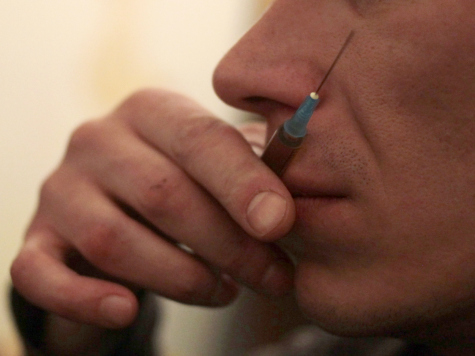The Mercury News reports that a frightening scenario is unfolding in Silicon Valley: employers and employees in the rapid-paced, high-tech culture are turning to illicit drugs as strong as heroin in order to keep up with the frantic pace of their jobs.
A seven-minute video exists of one Google executive, Forrest Timothy Hayes, 51, a father of five, dying after heroin was injected into his bloodstream by a reputed high-priced call girl aboard his yacht in Santa Cruz.
Hayes’s addiction was not unique; as Cali Estes, a Miami-based addictions coach, notes, “I’ve had them from Apple, from Twitter, from Facebook, from Google, from Yahoo, and it’s bad out there… and it’s a lot worse than what people think because it’s all covered up so well. If it gets out that a company’s employees are doing drugs, it paints a horrible picture.”
Experts on addiction aver that the deadly cocktail of a sudden influx of money, the intense competition in the high-tech field and the subsequent harsh deadlines, and the burgeoning black market has created an endemic problem in the field.
Steve Albrecht, a teacher of substance abuse awareness for Bay Area employers, asserted, “There’s this workaholism in the valley, where the ability to work on crash projects at tremendous rates of speed is almost a badge of honor. These workers stay up for days and days, and many of them gradually get into meth and coke to keep going. Red Bull and coffee only gets them so far.” He added that many tech companies eschew drug testing because “they want the results, but they don’t want to know how their employees got the results.”
Hydrocodone, a prescription painkiller, is one launching point for those who become addicted. Alice Gleghorn with the San Francisco Department of Public Health, stated, “There are 1.4 million prescriptions… in the Bay Area for hydrocodone. That’s a lot of pills out there.” But once people become inured to the effects of the drugs they are taking, a stronger drug is needed to elicit the high that is desired, leading to heroin, smoking first, then injecting later for a more powerful high.
Moreover, heroin is reportedly now cheaper than prescription drugs, at roughly $20 for half a gram.
Michael Johnson, executive director of The Camp Recovery Center, explained, “People graduate to doing things that they never thought they would have done. Fifteen years ago, if you’re shooting heroin, you had to had to go to some pretty dark places and deal with dark characters and engage in some dark deeds. Not so much anymore.”
From 2002 to 2012, the number of heroin users in the U.S. doubled, according to a federal Substance Abuse and Mental Health Services Administration. Heroin now ranks second only to alcohol as the most common drug in America. In Santa Clara County and surrounding counties alone, according to the DEA, there has been an upswing from 6.3 pounds in 2012 to 22 pounds for the first half of 2014.
Byron Kerr, a board member of LifeRing, a sobriety program, said, “If your life is spinning out of control and is highly charged with stress, you may believe you can take control by self-medicating, but that’s a delusion.”
Some experts assert that one gateway to eventual drug addiction is the self-medication of the nation’s youth, who later will attend “hackathons,” nonstop coding sessions, where the tables are full with high-sugar Red Bull and Monster Energy drinks. As Joyce Marvel-Benoist, program coordinator for The Exclusive Hawaii, a luxury treatment center, said, “There is a reason addiction centers by and large do not allow Red Bull and Monster on site.”

COMMENTS
Please let us know if you're having issues with commenting.